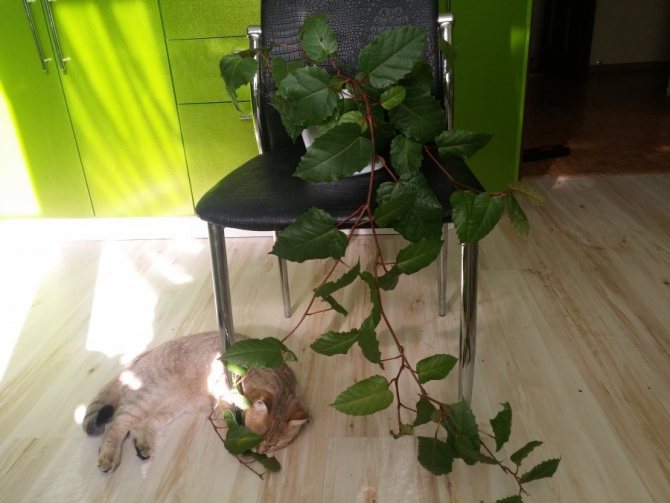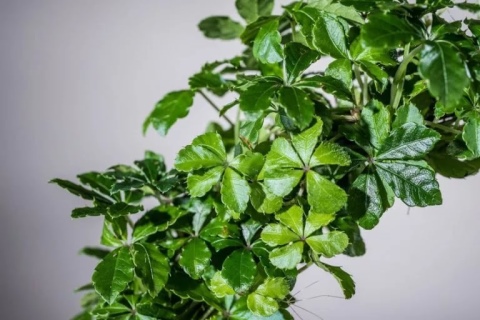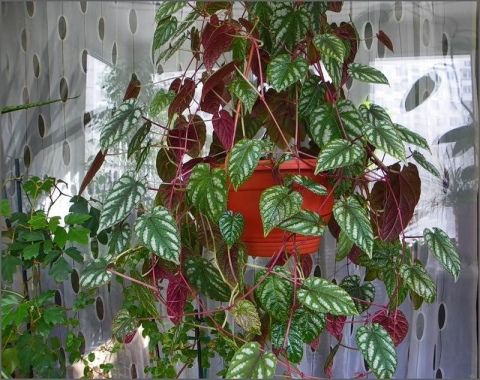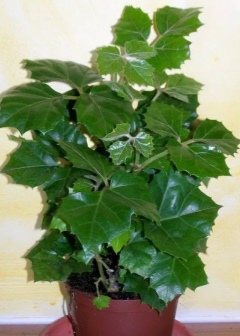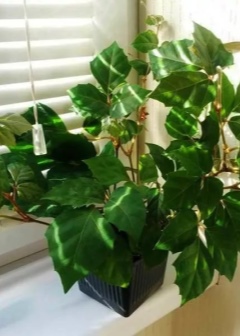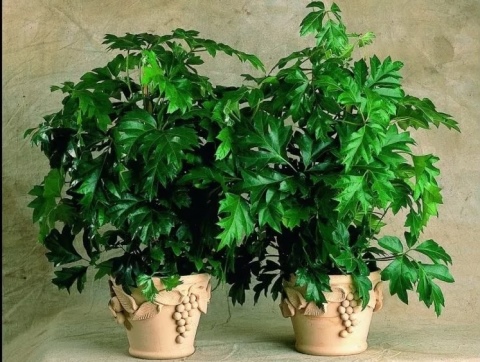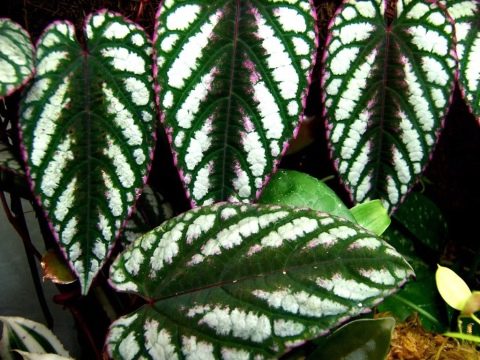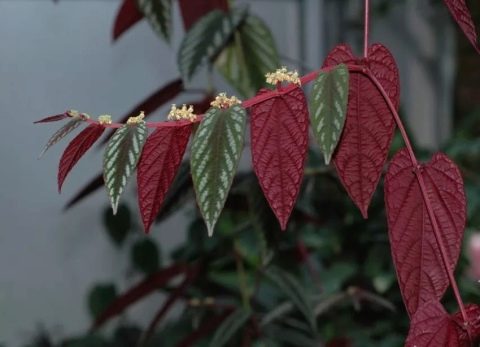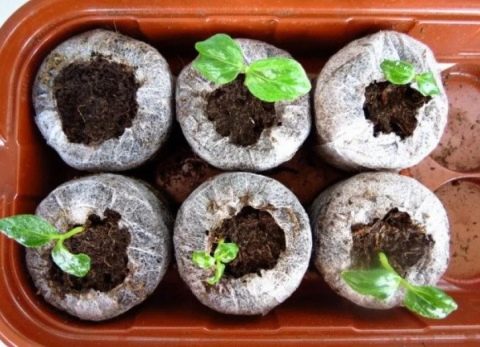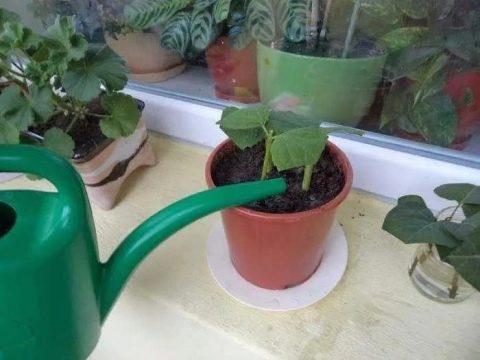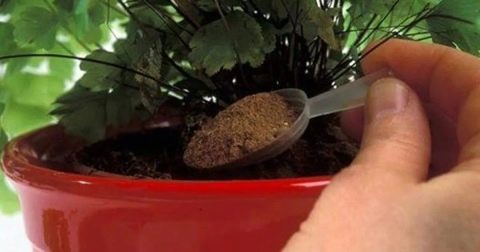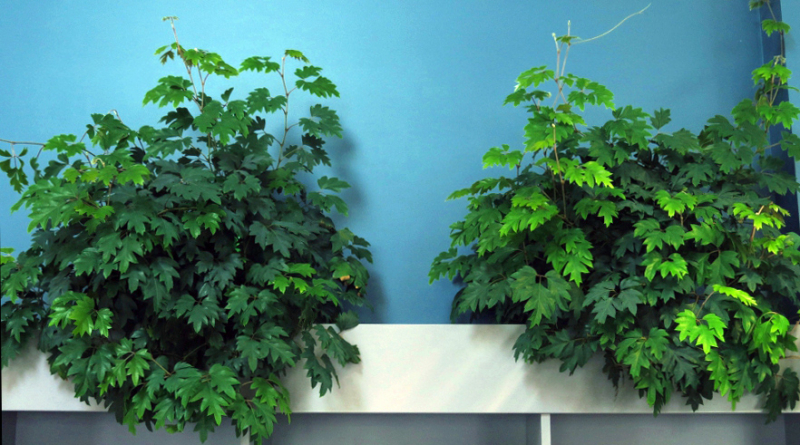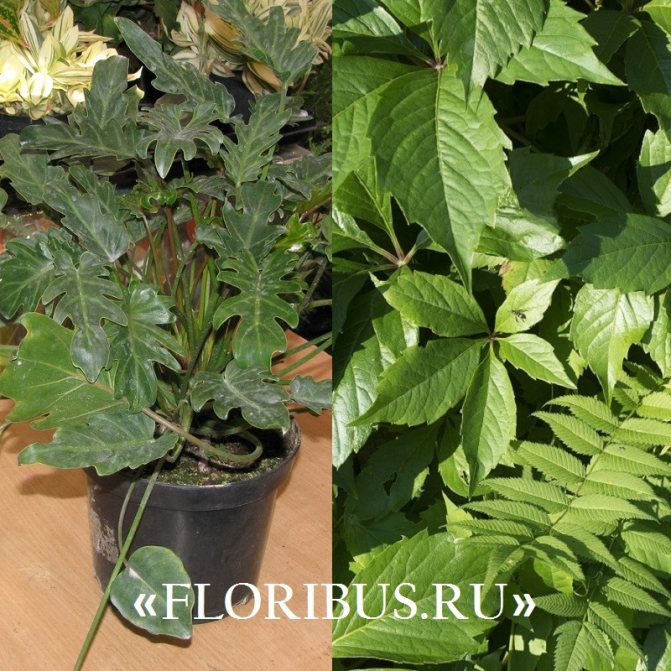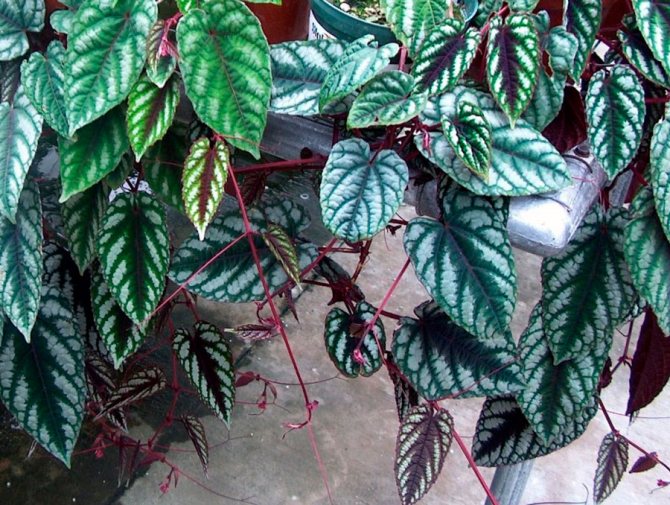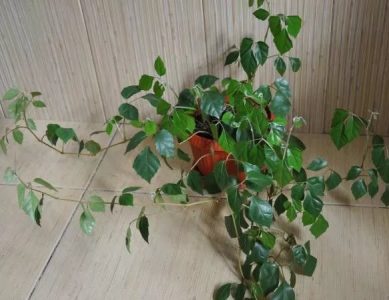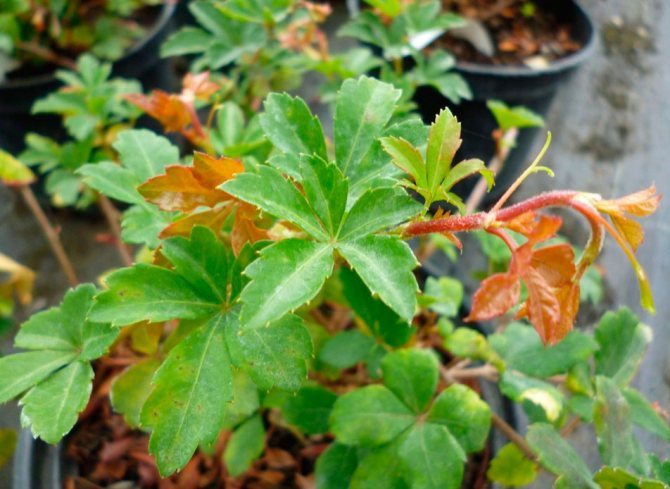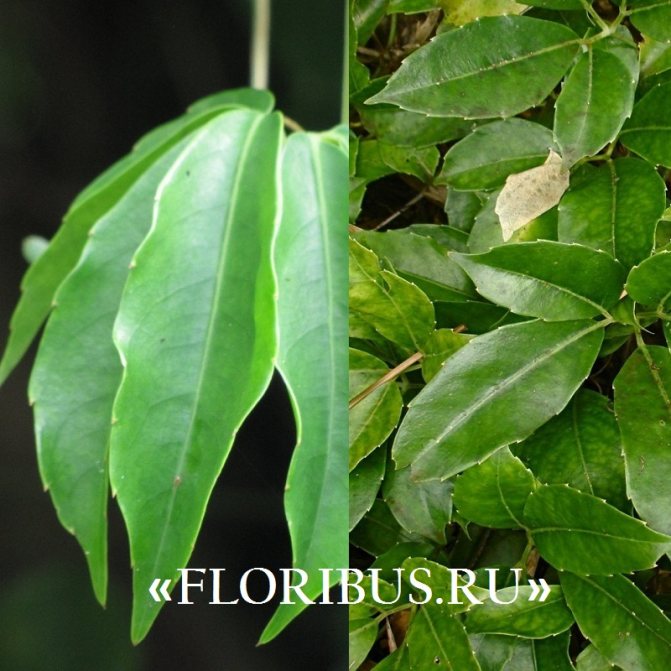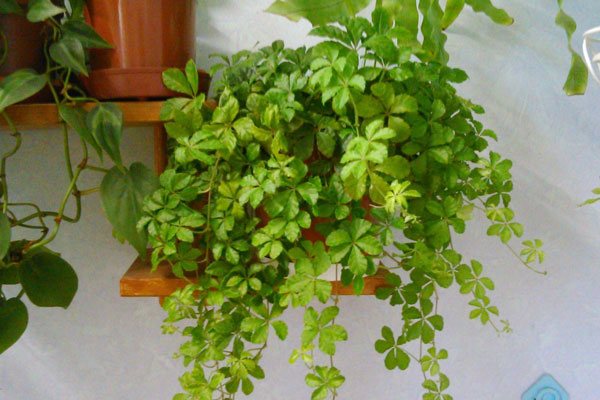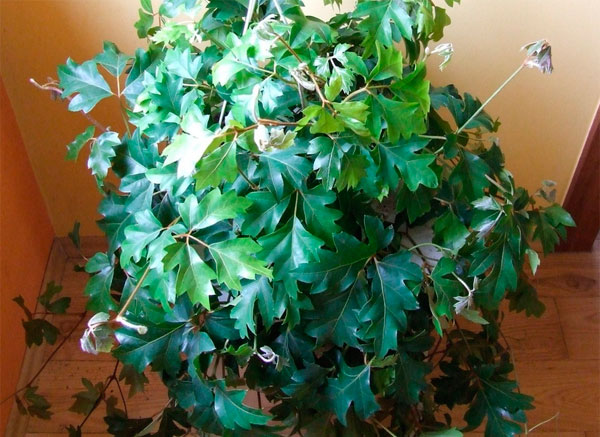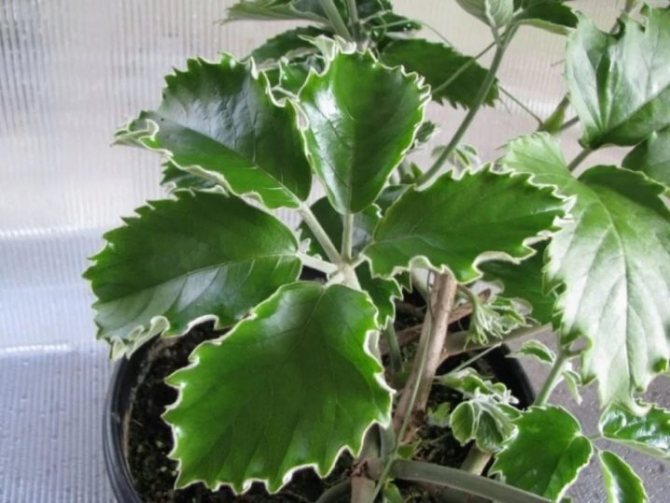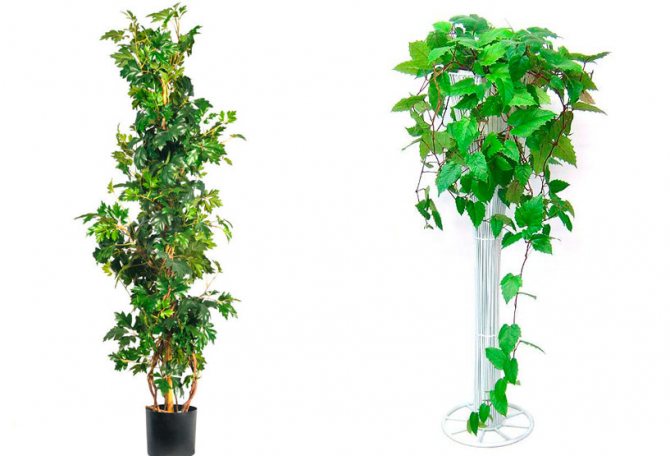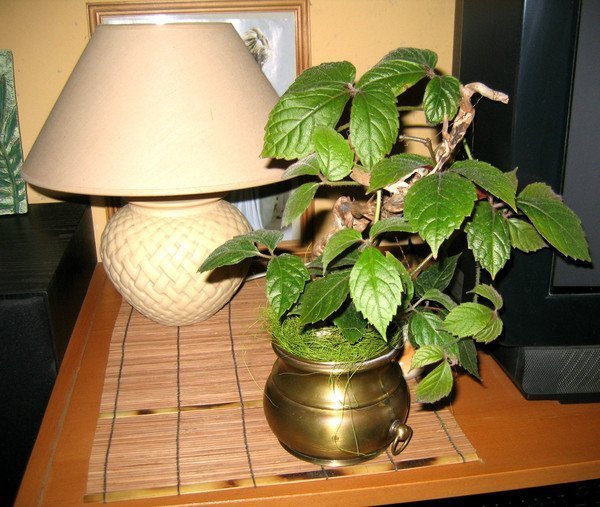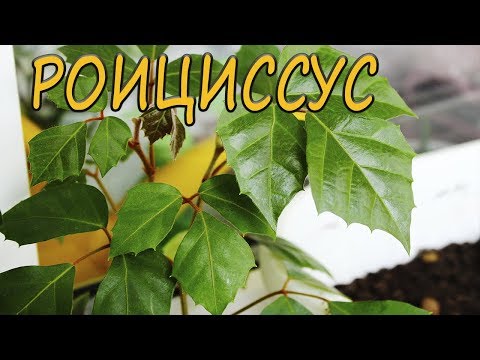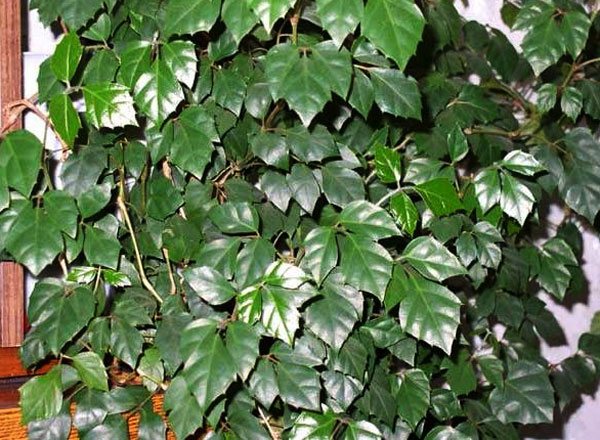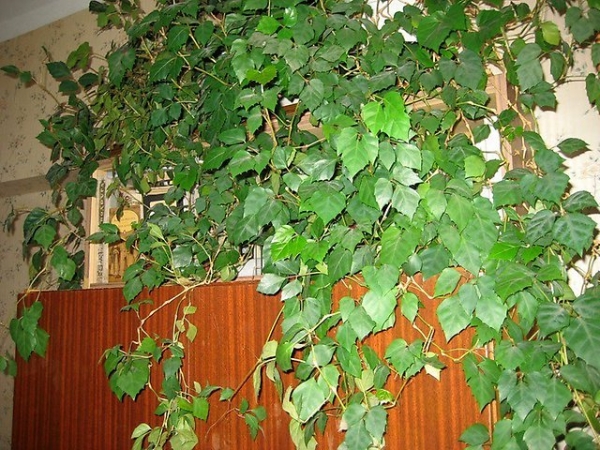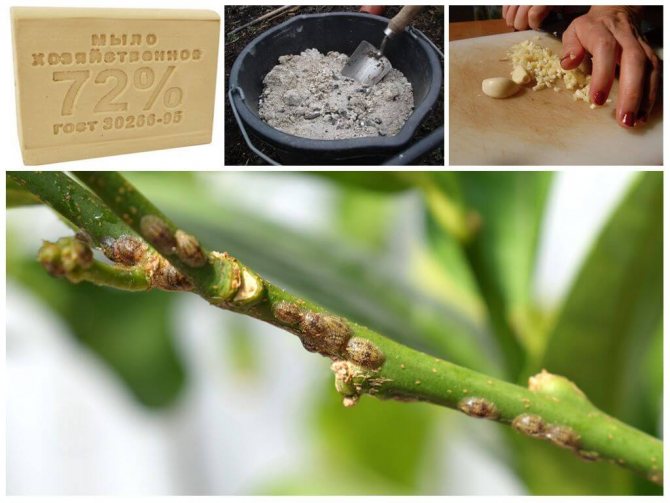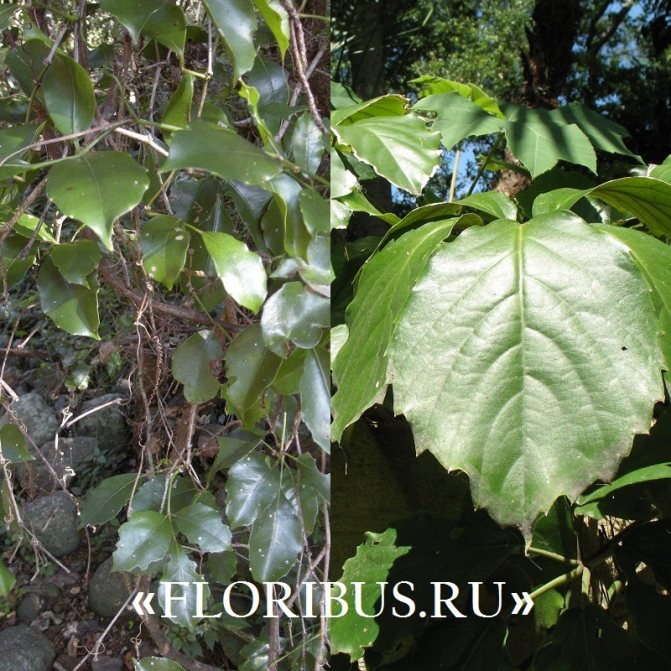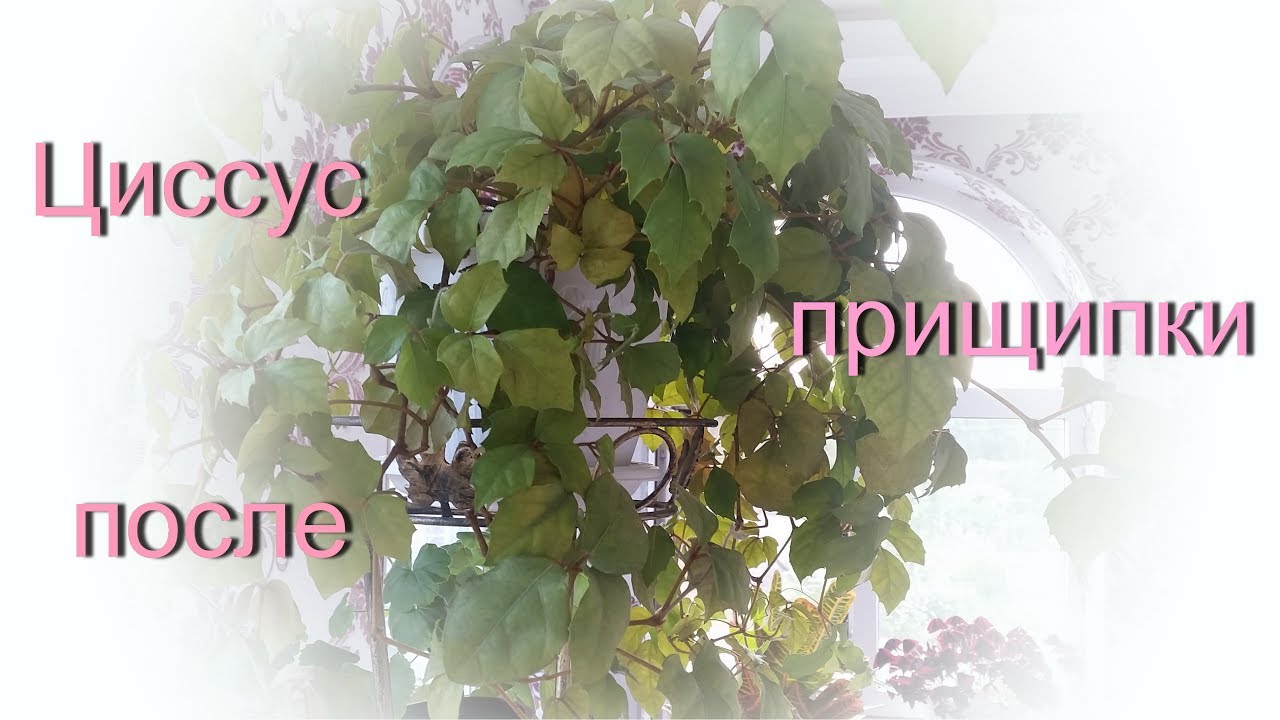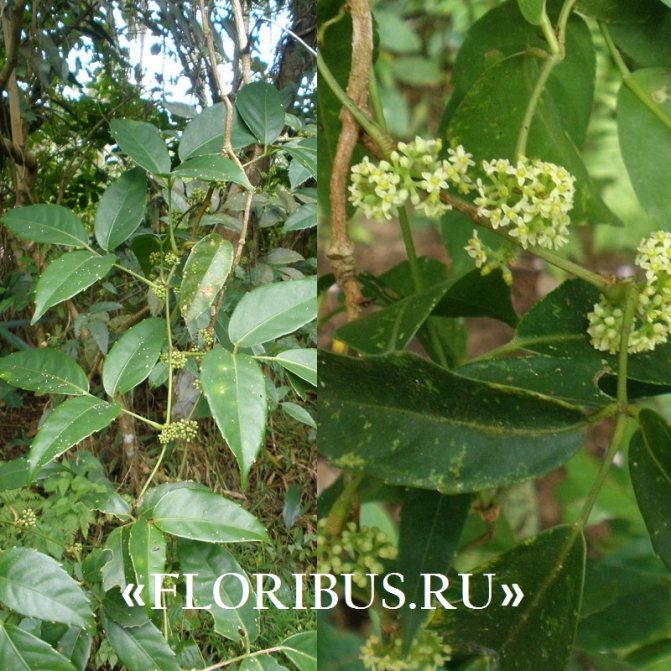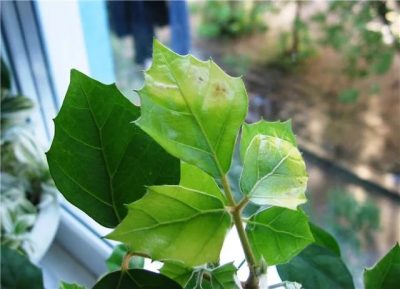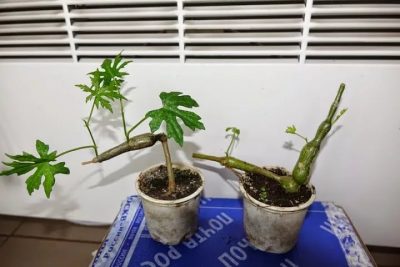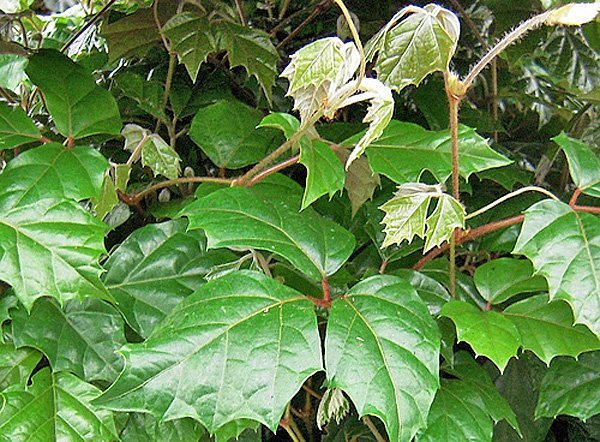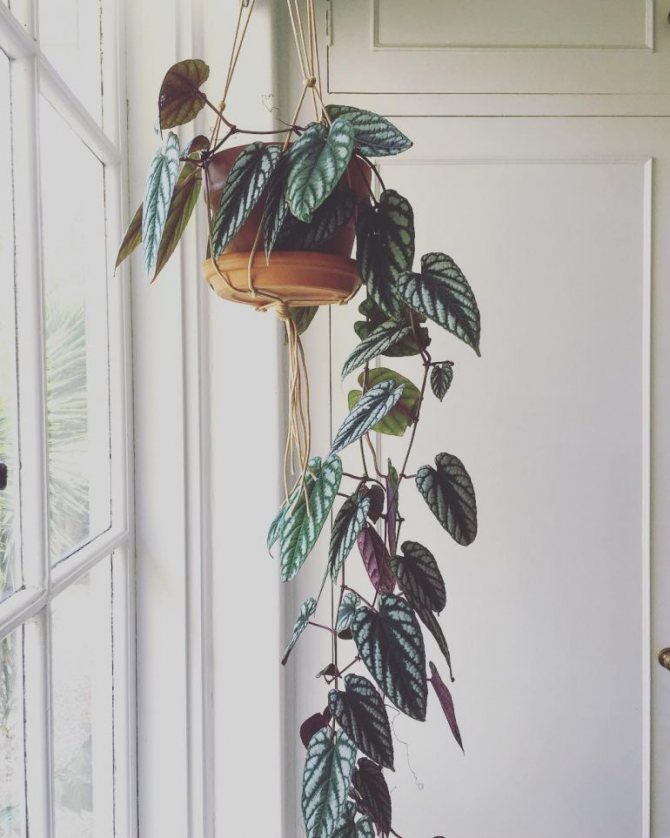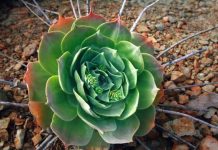Description of the plant
Cissus has been popular in room culture for many, many years, despite a large number of bright competitors. And it is not at all accidental. Finding another plant that is so lush and stably decorative, while unpretentious in care, is almost impossible. Cissus is popularly called "birches" or "home grapes".
These are unique evergreen climbing plants with very thin and flexible, actively branching shoots up to 2 m, clinging to any support thanks to the antennae. Fast growth is no less a virtue of cissus than dark, beautiful leaves. True, the rate of development of a plant, like the density of foliage, directly depends on the care and the number of "misses".
Simple, three-, five- or seven-lobed, alternate leaves of cissus can be oval-pointed or diamond-shaped. The reverse side is light, in some species it is purple.
Blooming comant cissus is rare. And false umbrellas with pale four-petal flowers are difficult to notice in the mass of leaves.
 Cissus (Cissus) in the room culture has been popular for many, many years, despite the large number of bright competitors. frolicking_foliage
Cissus (Cissus) in the room culture has been popular for many, many years, despite the large number of bright competitors. frolicking_foliage
Types of cissus with a photo
Of all the representatives of the genus, only a few species of cissus have become widespread in indoor floriculture.
Cissus rhombifolia is the most popular species native to South Africa. Its second common name is indoor grapes. Flexible, branched shoots eventually reach 1-3 m in length.
Numerous dark green ornamental leaves have a characteristic grape-like structure: the leaf plate consists of three rather large, pointed, diamond-shaped leaves.
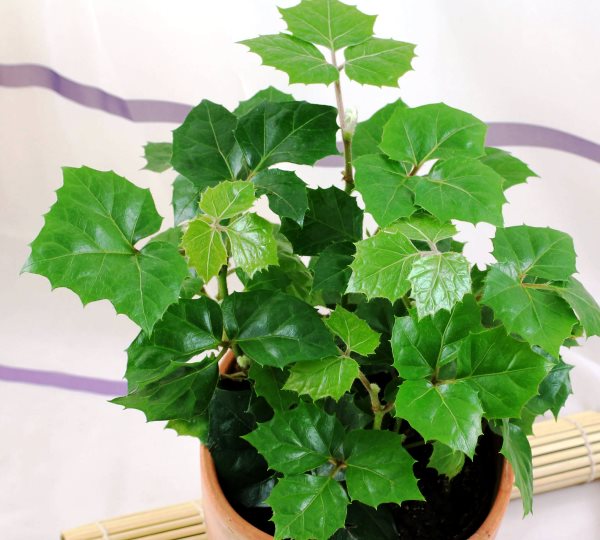 Cissus rhomboid
Cissus rhomboid
Above, the leaf plates are smooth and shiny, but below they have a reddish-brown tint, leaf petioles and young shoots are slightly pubescent.
In adult specimens, elastic, thin, few whiskers grow from the axils of the leaves, which cling to the supports. The flowers are inconspicuous, small, creamy or greenish, which rarely appear in indoor grapes at home.
This species is represented by the well-known variety "Ellen Danica", which was obtained by Danish breeders in the early 1970s. Cissus "Ellen Danica" has dark, shiny leaves, more like oak.
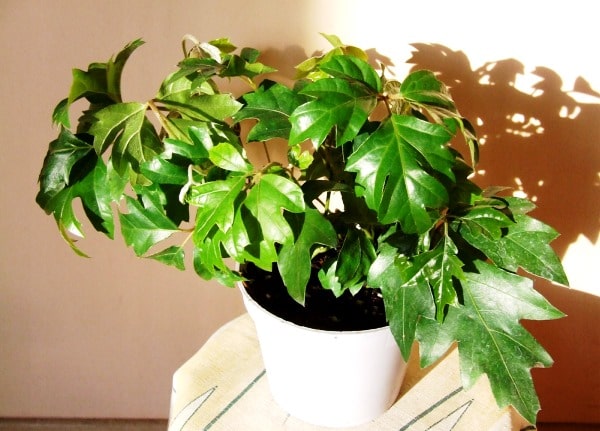 Cissus variety "Ellen Danica"
Cissus variety "Ellen Danica"
Antarctic Cissus (Cissus antarctica) is native to Australia. A plant with long, raised shoots, which, during growth, climb up supports due to sticky tendrils.
Leaves are solitary, large, cordate and dentate at the edges. In appearance they resemble birch leaves, thanks to which the flower is widely known as indoor birch.
 Flower birch or cissus antarctic
Flower birch or cissus antarctic
In nature, liana grows very quickly and can reach large sizes (up to 4-5 meters), but at home its size is not so large. This is one of the easiest indoor plants to grow.
Cissus discolor. The plant is less common in indoor floriculture and has a completely different appearance than other vines of this genus.
The characteristic feature of Cissus discolor is its oblong, heart-shaped, velvety leaves with silvery-white or white-green spots, a burgundy or green center and red-violet veins. Because of its color, the plant looks more like a begonia rex.
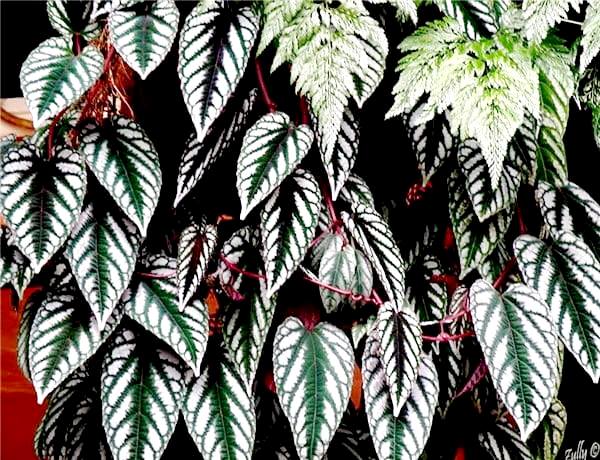 Cissus discolor
Cissus discolor
Shoots and petioles of creepers are red. This highly decorative species is more demanding to care for, as it needs constantly warm conditions with high air humidity.
Cissus round-leaved or rotundifolia (Cissus rotundifolia) is an unpretentious vine with beautiful, rounded, waxy leaves. Its second name is Arabian wax ivy.
 Rotundifolia
Rotundifolia
Cissus quadrangularis is a succulent vine 1.5 meters high. Shoots are quadrangular with internodes 8 to 10 cm long and 1.2 to 1.5 cm wide.
Edges along each corner are leathery. Small toothed three-lobed leaves 2-5 cm wide appear at the nodes. In mature plants, clusters of very small yellowish-green flowers are formed, followed by inedible, red fruits.
 Cissus quadrangularis
Cissus quadrangularis
Cissus quadrangularis is a famous medicinal plant in India. The Sanskrit name of the species literally means that it saves bones from destruction. The plant's extracts have long been used in traditional African and Thai medicine.
Unlike other species, the rules for caring for cissus quadrangular are similar to caring for succulents. The plant loves the sun, bright light, moderately moist soil and is well adapted to dry air.
Rocissus species
An indoor plant, under the name of birch or indoor grapes, which has spread literally everywhere in our country, is actively used for landscaping offices, schools, and in modern interiors, and in classic collections of indoor plants. Simple, unassuming, shade-tolerant, versatile in use, it captivates with a combination of beautiful, but not variegated greenery and surprising ease of formation. It is often called the "grandmother's" plant, familiar from childhood, but Roicissus have something to surprise.
Roicissus are evergreen creeping and climbing shrubs with very long shoots ranging from 60 cm to several meters long. They are among the most popular indoor vines. But the range of Rocissus is not limited only to the species that has received such a simple popular nickname. Moreover, birches are not the most attractive of Roicissus. In the genus of these beauties that have long become cultured, there are 15 plant species. Of these, only 3-4 species are grown as a room culture.
Birch, or rhombic roicissus (Rhoicissus rhomboidea). Konrad Kalbarczyk
Birch, or rhombic roicissus (rhoicissus rhomboidea) is a climbing evergreen liana, light, flexible, with elongated internodes of thin shoots reaching 1.5 m in length. The complex leaves, consisting of three rhombic lobes on long stalks, sit alternately. The dark, rich green color on the upper side of the leaves is combined with a dull green, lighter color on the lower side. The veins on the leaf stand out brightly, ending in a tooth along the edge of the leaf. The greenery of the plant, including the shoots, is usually covered with reddish pubescence. Roicissus has a thin tendril. A birch is used both as an ampelous plant, and as a pot plant, and as a liana on a support, and to create green walls, screens, screens.
Roicissus Cape (rhoicissus capensis) is an ornamental-deciduous, climbing plant, suitable for growing on supports, and for the role of ampelous culture. A fast-growing, unpretentious and hardy plant conquers with rather large and perfectly symmetrical leaves, resembling grape leaves in shape, but only distantly. They are not divided into leaflets-lobes, but whole, flaunt with large, curly grooves, reaching 20 cm in diameter. The height of the plants always depends on the support and the form of cultivation, but even on the trellis, the Cape Roicissus will not exceed 2 meters. This look is more effective, suitable for large compositions.
The Cape Roicissus has very beautiful varieties with improved characteristics. For example, the luxurious leaves of the Evergreen Grapewine variety with deep indentations and impeccable shape conquer with a rich, bright green color.
Finger roicissus (rhoicissus digitata) is fundamentally different from its "colleagues". His leaves really resemble fingers in shape. This elegant, somewhat prim plant looks better on curly supports.
One of the key trump cards of the Rocissus, which made the birch tree so popular, is its simplicity and simplicity of requirements. For all Rocissus, the care is the same, and even the more decorative and rare species are grown according to the same laws. The plant needs systemic watering, but otherwise the selection of conditions and care for Rocissus is not at all difficult. Well adapting to different temperature conditions, dry air, shading tolerant, birch and its gathering are really very easy to care for.
How to propagate?
Several breeding methods are practiced. Cissus is a fast growing plant, so reproduction is not a problem.
- Cuttings. Cuttings are cut at any time of the year. The pot is filled with a light nutrient mixture with a high content of sand and peat. 3-4 cuttings are placed in one pot. Moisturize regularly, maintain a temperature of 20-22 ° C. The appearance of new leaves indicates successful rooting.
- By dividing the bush. Adult, heavily overgrown bushes during transplantation can be divided. In the planted parts, it is recommended to shorten the vines so that the plant has the strength to build up the root system.
- Seeds. By sowing seeds, Antarctic cissus is mainly propagated. The optimal sowing time is spring. A sand-peat mixture is poured into a small box, moistened. Seeds are distributed over the surface of the soil, lightly sprinkled with the same soil. Seedlings are kept under glass, systematically ventilated. After the appearance of the second true leaf, they are seated in separate pots with a diameter of 7 cm. Further transplants - as they grow.
1. Seven Secrets of Success:
| 1. Growing temperature: summer - 20 - 25 ° С, in winter some varieties of cissus require a cool dormant period, while other plants are grown throughout the year at room temperature. |
| 2. Lighting: green-leaved plants can easily tolerate partial shade; variegated plants will need enough bright light. |
| 3. Watering and air humidity: dry the substrate between waterings 2 - 3 centimeters deep between waterings during the growing season, in winter reduce the frequency of watering in accordance with the temperature in the room. Watering frequency will also depend on the specific cissus species. The air humidity is quite high. |
| 4. Pruning: formative pruning to create a lush crown, sanitary to remove old and weak shoots. |
| 5. Soil: well drained, with a high organic content and easily permeable to moisture and allowing the root system to breathe, with a neutral or slightly acidic pH. |
| 6. Top dressing: mineral fertilizers for flowering plants in spring and summer every 2 weeks. In autumn, feeding is reduced, in winter it is not carried out at all. If the plant is in a warm place. then feeding can be done once a month, even during the winter months. |
| 7. Reproduction: by division during transplantation, vegetatively - by cuttings, air layers, sometimes a flower is grown from seeds. |
Botanical name: Cissus.
The cissus flower is a family. Grape.
Homeland of the plant. South America.
Description. Cissus, indoor grape or indoor birch is a very extensive and varied genus of lianas and shrubs.
Stems are creeping, drooping, branched, woody in the base with age and are covered with brown bark.
Types of dyschidia
In natural conditions, more than 120 varieties of dyschidia are found, but only a few of them are used in culture. All of them are suitable for indoor growing, although they require a lot of attention.
Dyschidia ovata. The plant has long green-pinkish stems covered with oval leaves. Young leaves are pink at first, but gradually turn light green. Whitish streaks are visible on the leaves, which increase the decorative effect of the plant. This species normally perceives drafts and small cold snaps.
 Dyschidia ovata
Dyschidia ovata
Ruskusolistnaya dyschidia (russifolia).Very graceful shape with long stems, densely covered with small heart-shaped leaves. For such an appearance, flower growers often call it "dyschidia of a million hearts". During the flowering period, small snow-white flowers appear in the leaf axils. The bloom is accompanied by an intense honey aroma.
 Ruskus-leaved dyschidia
Ruskus-leaved dyschidia
Scallop dyschidia. Creeping stems are densely covered with airy roots and oval leaves. The shoots are colored light green. Twice a year, the vine blooms with pink or cherry small flowers.
 Dyschidia scallop
Dyschidia scallop
Dyschidia vidalia. The variety has a bright green color and many rounded leaves. Light pink flowers appear 2-3 times a year.
 Dyschidia vidalia
Dyschidia vidalia
Dyschidia hirsut. A rather rare variety with rounded, densely pubescent foliage. Embossed veins are visible on each leaflet. During the flowering period, a large number of small purple flowers are formed on short peduncles.
 Dyschidia hirsut
Dyschidia hirsut
Rafflesa dyschidia. The plant grows long (up to 5 m) shoots covered with oblong, dense leaves. It blooms with small yellowish flowers, which are collected in small umbrellas.
 Dyschidia raffleza
Dyschidia raffleza
Dyschidia apple leaf. Differs in more elastic stems and large foliage. Each leaf is shaped like an apple and is colored green with white spots.
 Dyschidia apple leaf
Dyschidia apple leaf
Areca species and varieties
The types of areca that are most popular with flower growers will be described below.
Areca triandra

Originally view from the Indian peninsula of Malacca. The height of a palm tree is about 300 cm, it has several trunks, each of which reaches no more than 50 mm in diameter. The surface of the trunk is covered with annular scars. The length of straight pinnate leaf plates is about one and a half meters, they include leaves, the width of which is not more than 35 mm, and the length is from 0.5 to 0.9 m. Fragrant flowers are painted white. Fruit length is about 25 mm. This very spectacular palm is cultivated in warm rooms.
Areca catechu, or betel nut
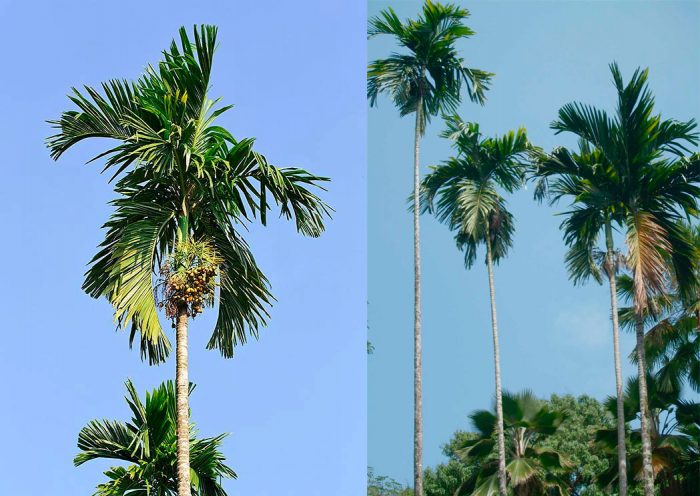
This single-stemmed palm is native to the Malay Peninsula and the Malay Archipelago, which are located in eastern India. The height of the trunk, covered with ring-shaped scars, is about 25 meters, while in diameter it reaches only 5-12 centimeters. Cirrus leaf plates of an arcuate-curved shape have a length of about 1.8 meters. They consist of densely spaced leaves, which width is about 3 centimeters, and the length is 45 centimeters. In the leaf axils, inflorescences are formed, having a length of about 0.6 m, they include white fragrant flowers. Yellowish-red seeds form inside the fruit.
Areca yellowing (Areca lutescens)
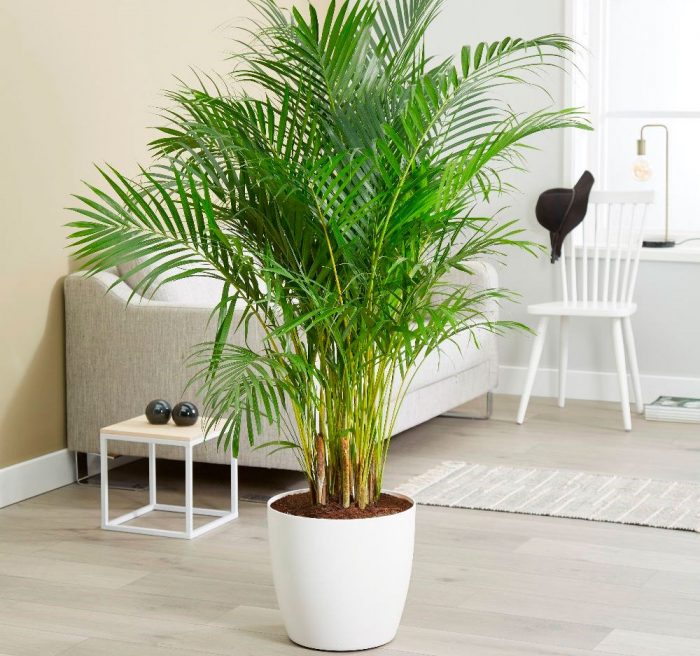
Or yellowing dipsis, or yellowing chrysalidocarpus. The native land of the species is Malaysia. The height of the thin straight stem, covered with annular scars, is about 10 meters. Arcuate-curved pinnate leaf plates in length reach about 150 cm. They include leaves about 3 centimeters wide and up to 35 centimeters long, which are very densely located.
Palm tree areca or betel. Care and reproduction of the areca palm tree at home

